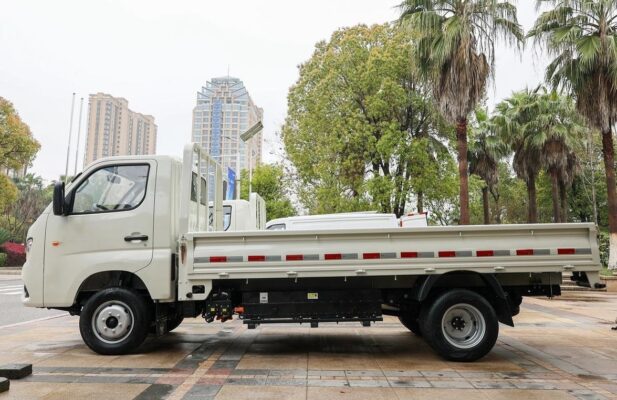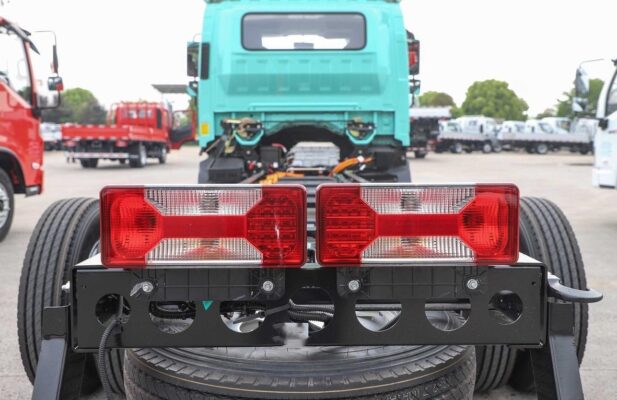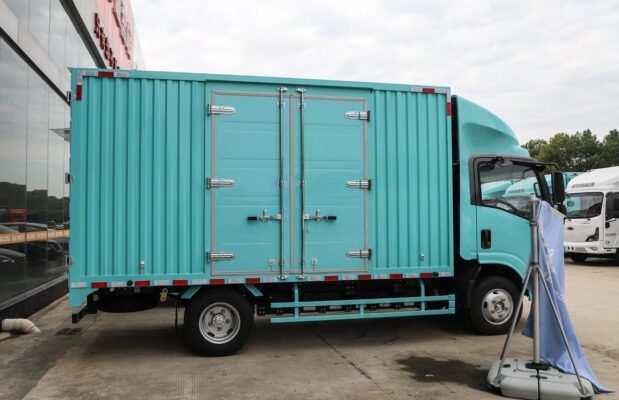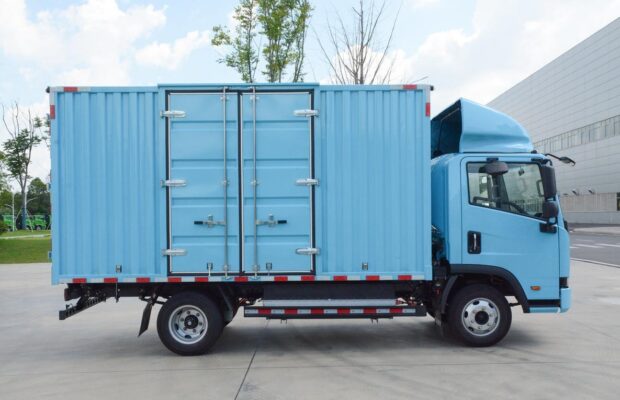Xov xwm tsheb loj
How far can the new energy electric logistics vehicle run on a single charge?
Muab lo rau los ntawm Hluav Taws Xob Truck
Nyob rau hauv cov evolving toj roob hauv pes niaj hnub thauj, new energy hluav taws xob logistics tshebMuaj emerged ua ib tug neeg uas ua ntawv tseem ceeb neeg uas ua ntawv, Tshwj xeeb tshaj yog nyob rau hauv urban qhia tus me nyuam thiab logistics sectors. Thaum lawv muaj ob peb kom zoo dua xws li txo emissions thiab txo nqi kev khiav hauj lwm, Yog ib qhov tseem ceeb xav txog lawv siv yog ntau yam lawv yuav cuag tau rau ib zaug xwb. Qhov ntau yam no tseem ceeb heev nyob rau hauv kev txiav txim lawv suitability rau ntau daim ntaub ntawv thiab pab cov neeg siv kom paub txiav txim txog lub tsheb yog suited rau lawv xav tau.

New energy hluav taws xob logistics tshebs yog tseeb ntau suitable rau tej chaw uas luv luv thiab nquag nres yog hom. Rau intercity tsheb thauj mus los, txawm li ntawd los, electric vehicles face some challenges due to the longer distances involved and the need for more frequent charging. So, today we will take a closer look at how far these hluav taws xob logistics tshebs can run on a single charge.
It’s important to note that the concept of range can be somewhat broad, as different models of new energy hluav taws xob logistics tshebs have varying cruising ranges. The range primarily depends on several factors, including the specific model, battery capacity, vehicle size, and cargo load.

For electric van models, such as the Changan V5, a lengthened small van with a total vehicle length of 4.5 meters, the battery capacity plays a crucial role in determining its range. With a battery capacity of 48.5 kWh, it can run approximately 280 kilometers. Generally, van models like this will be matched with more than 35 kWh of electricity, and there is no problem achieving a range of 200 kilometers.
Imagine a delivery company operating in a busy urban area. The Changan V5’s ability to cover a distance of 280 kilometers on a single charge can be extremely useful for making multiple deliveries throughout the day without the need for frequent recharging. This not only saves time but also reduces operational costs compared to traditional fuel-powered vans.

For medium-sized new energy electric vans, like those produced by Nanjing Golden Dragon, the combination of battery capacity and vehicle size impacts the range. Matched with 46 kWh hluav taws xob thiab tag nrho lub tsheb ntev ntawm 5.3 meters, Cov vans yuav khiav txog 220 kilometers. tiam sis, thaum nqa ib ton cargo, Ntau yam yog feem ntau txo rau ib ncig 180 kilometers. Yog hais tias ib nruab nrab-sized van no tsis matched nrog lub roj teeb ntawm ntau tshaj 50 kWh, Nws yuav tsis yooj yim kom muaj ib tug cruising ntau yam ntau tshaj 200 kilometers.
Piv txwv, Lub tuam txhab logistics thauj khoom nyob rau hauv ib lub nroog los yog nyob ze txoj yuav nrhiav tau ib nruab nrab-sized hluav taws xob van suitable rau lawv haujlwm. The reduced range when carrying cargo highlights the importance of considering the vehicle’s load capacity when estimating its practical range. This knowledge can help companies plan their routes and delivery schedules more effectively to ensure that they don’t run out of power mid-route.

For larger Sprinter models, such as those from Iveco, Maxus, and Yufeng hluav taws xob logistics tshebs, the range is also influenced by battery capacity and vehicle characteristics. The electric Maxus EV80, for instance, is matched with 75 kWh hluav taws xob thiab muaj ib tug cruising ntau yam txog 230 kilometers. Thaum nqa cargo, Ntau yam yog yeej nyob ib ncig ntawm 200 kilometers. txuas ntxiv, Lub hluav taws xob Maxus logistics tsheb yog tsuas matched nrog ceev them thiab yog tsis muaj qeeb them kev xaiv muaj. Qhov no txhais tau tias cov neeg siv yuav tsum tau mus saib tau sai-them infrastructure kom npaum li cas.
Suppose lub tuam txhab siv ib electric Maxus EV80 rau thauj loj tagnrho ntawm cov khoom. Qhov xav tau ceev them piles yuav yog ib tug xav txog xaiv lub tsheb, Thaum nws yuav tsum tau ceev faj npaj los xyuas kom meej tias muaj txaus them cov ntsiab lus raws cov tseem khiav los yog ntawm lub tuam txhab depot. Uas tsis muaj kev ceev-them infrastructure yuav uas txwv lub tsheb peb muaj peev xwm.

Rau 4.2-meter box-hom hluav taws xob freight truck uas yuav muaj lub neej 2 tons cargo, Qauv xws li FAW Jiefang JF6, Dongfeng Kapit, SAIC Yuejin EC series, and Dayun E3 offer different ranges depending on their battery capacities. The FAW Jiefang hluav taws xob logistics tsheb is matched with 92 kWh of electricity. The cruising range under working conditions is 330 kilometers and it supports fast charging. This light hluav taws xob logistics tsheb is more suitable for logistics companies that require batch vehicle use and have the ability to install charging piles on a larger scale.
Piv txwv, a large logistics company with multiple delivery routes and a need for transporting heavier loads may find the FAW Jiefang electric freight truck a viable option. Kuj ntev npaum li cas 330 kilometers yuav txo tau qhov frequency uas them nres thiab ua hauj lwm efficiency. tiam sis, Qhov xav tau vas nthiv-them infrastructure thiab cov xav txog batch tsheb siv highlight qhov tseem ceeb ntawm muaj ib comprehensive them zoo nyob rau hauv qhov chaw.

caij ntuj sov, Lub zog tam sim no lub zog tshiab hluav taws xob logistics tshebYeej muaj ib tug cruising ntau yam txog 200 mus rau 300 kilometers. Yog hais tias koj tsav tsheb txhua hnub 300 kilometers, Tsheb fais fab tej zaum tseem yuav tsis tau siab raws li qhov thov thiab tej zaum yuav tau them rau txoj kev. Qhov no ua rau lawv kuj suitable rau urban logistics thiab qhia tus me nyuam industries qhov twg luv luv thiab ntau heev nres yog hom. Hluav taws xob nruab nrab-sized thiab me vans yuav tau them uas tsev neeg hluav taws xob rau tej zaum, Uas ua rau lawv kuj raug nqi zoo. On the other hand, Tsheb xws li cov Maxus thiab 4.2-meter thawv truck yuav tsum siv vas nthiv-them piles thiab yuav tsis tsim nyog rau tib chav tsev muas khoom. Lawv muaj ntau suitable rau batch purchases uas tuam txhab uas muag yuav ua npaum siv cov pawg thiab xyuas kom meej tias ib lub lag luam seamless.
Xaus, to taub ntau yam peev xwm ntawm lub zog tshiab hluav taws xob logistics tshebQhov tseem ceeb rau cov lag luam thiab cov neeg xaiv lawv adoption. Ua tib zoo xaiv tej yam xws li tsheb loj, battery capacity, cargo, thiab them infrastructure muaj nyob, Cov neeg siv yuav muab kev txiav txim siab txog qhov twg hluav taws xob logistics tsheb Zoo suited rau lawv xav tau. Raws li tshuab tseem ua ntej thiab them infrastructure yuav ntau ntau, Ntau yam thiab peb muaj peev xwm ntawm cov tsheb no tej zaum yuav txhim kho ntxiv, Ua rau lawv ib qho kev xaiv txawm txaus nyiam xaiv rau lub logistics thiab tsheb thauj mus los sectors.